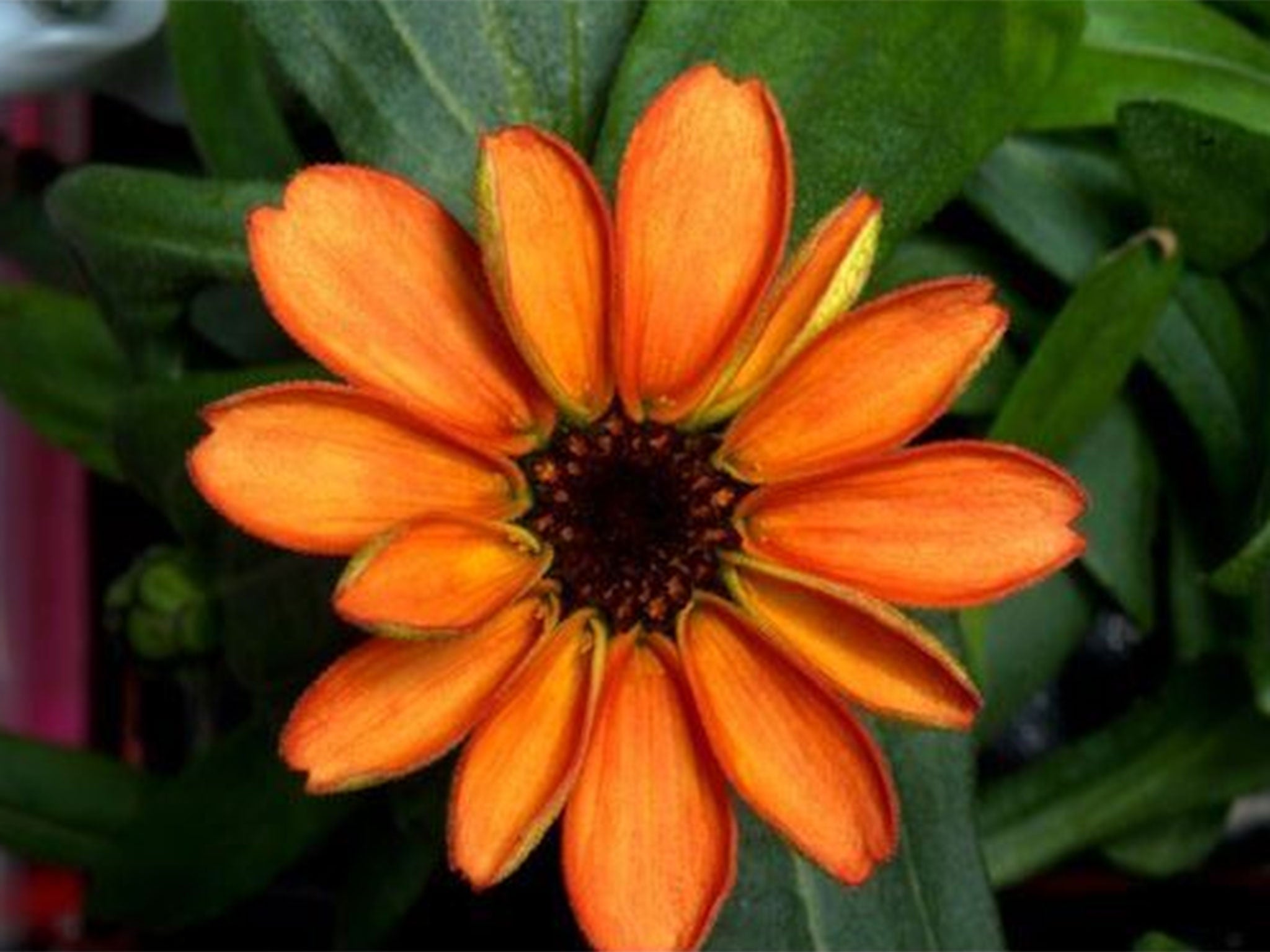Astronauts celebrate as flower blooms in the zero gravity of space
US astronaut Scott Kelly announced the news from the International Space Station

Your support helps us to tell the story
From reproductive rights to climate change to Big Tech, The Independent is on the ground when the story is developing. Whether it's investigating the financials of Elon Musk's pro-Trump PAC or producing our latest documentary, 'The A Word', which shines a light on the American women fighting for reproductive rights, we know how important it is to parse out the facts from the messaging.
At such a critical moment in US history, we need reporters on the ground. Your donation allows us to keep sending journalists to speak to both sides of the story.
The Independent is trusted by Americans across the entire political spectrum. And unlike many other quality news outlets, we choose not to lock Americans out of our reporting and analysis with paywalls. We believe quality journalism should be available to everyone, paid for by those who can afford it.
Your support makes all the difference.A flower has bloomed on the International Space Station (ISS) for the first time in a boost for any future mission to Mars.
US astronaut Scott Kelly announced the news that a zinnia plant had flowered on his Twitter account, along with a photograph of an orange, 13-petalled flower.
“First ever flower grown in space makes its debut! #SpaceFlower #zinnia #YearInSpace,” he wrote, adding: “Yes, there are other life forms in space!”
In fact, a rock cress plant bloomed on the then Soviet Union’s Salyut 7 space station in 1982.
A Nasa blog about the flowers, written before one had bloomed, said zinnias were chosen not for their beauty but to “help scientists understand how plants flower and grow in microgravity”.
At the end of December, Mr Kelly tweeted a photograph of sad-looking zinnias with curled, mouldy leaves.
“Our plants aren't looking too good. Would be a problem [for a human colony] on Mars,” he said.
Other plants, such as lettuce and wheat, have been grown in space but being able to get flowers to bloom and produce seeds efficiently would be a significant step.
“The zinnia plant is very different from lettuce,” Trent Smith, project manager of the ISS’s “Veggie” plant growth facility, told the Nasa blog.
“It is more sensitive to environmental parameters and light characteristics. It has a longer growth duration between 60 and 80 days.
“Thus, it is a more difficult plant to grow, and allowing it to flower, along with the longer growth duration, makes it a good precursor to a tomato plant.”
In addition to helping scientists work out how to grow useful plants in space, it is thought the presence of a flower will raise spirits among the ISS crew.
“Plants can indeed enhance long-duration missions in isolated, confined and extreme environments – environments that are artificial and deprived of nature,” Alexandra Whitmire, of the Nasa Human Research Programme, said.
“While not all crew members may enjoy taking care of plants, for many, having this option is beneficial.
“In future missions, the importance of plants will likely increase given the crews’ limited connection to Earth. Studies from other isolated and confined environments, such as Antarctic stations, demonstrate the importance of plants in confinement, and how much more salient fresh food becomes psychologically, when there is little stimuli around.”
Join our commenting forum
Join thought-provoking conversations, follow other Independent readers and see their replies
Comments